How to Create a Successful Content Strategy
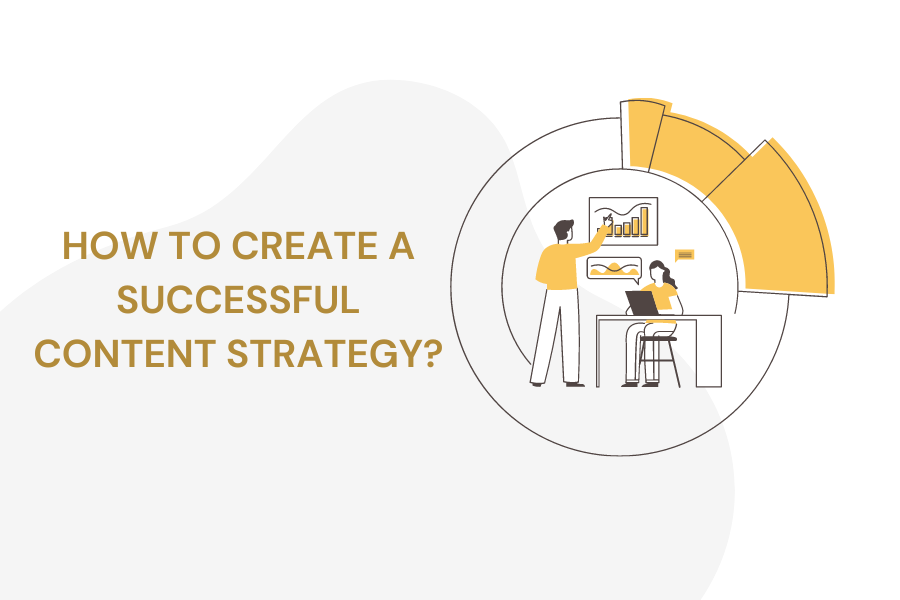
Creating a successful content strategy is crucial for any business or individual building an online presence.
As someone who has worked in the digital marketing industry for years, I can attest that a well-executed content strategy can drive traffic, increase engagement, and ultimately lead to greater success.
However, developing a content strategy can be difficult, especially for those just starting.
You know what they say: content is king! And creating a solid content plan is the key to ruling your digital kingdom.
But here’s the kicker:
It’s not a one-and-done deal.
Nope, you gotta keep your finger on the pulse of your audience and update your plan accordingly.
Trust me; it’s worth it.
TL;DR
- Define your target audience
- Develop a messaging strategy and brand voice
- Map out your content themes and topics
- Identify content gaps and opportunities
- Prioritize and schedule your content creation
- Optimize your content for search engines
- Create engaging and shareable content
What is a Content Plan?
A content plan is like a roadmap that tells you where to go, what content to create, and how to promote it. It keeps your content on point, consistent, and valuable to your audience. A killer content plan is a secret to rocking your content marketing.
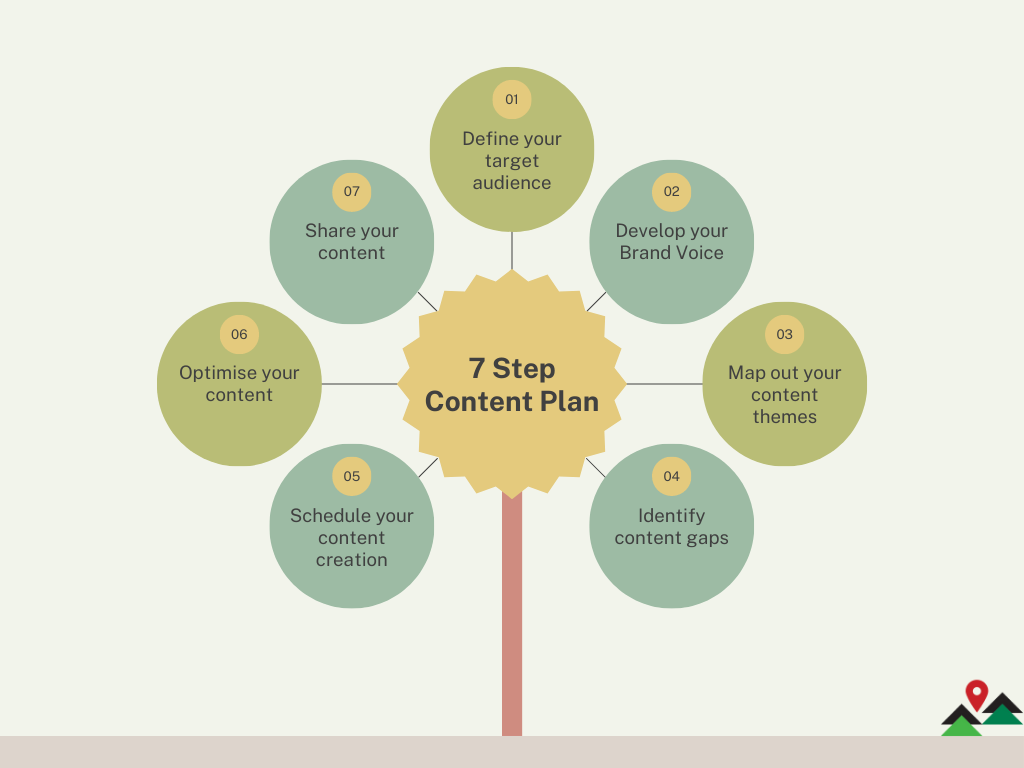
Step 1: Define Your Target Audience
Define your target audience, ALWAYS. You need to understand who you’re creating content for so that you can create content that resonates with them. Start by creating buyer personas that represent your ideal customers. These personas should include age, gender, location, interests, pain points, and buying habits.
Step 2: Develop a Messaging Strategy and Brand Voice
Once you’ve defined your target audience, it’s time to develop a messaging strategy and brand voice. Your messaging plan should outline the key messages you want to convey to your audience. Your brand voice should reflect your brand’s personality and tone of voice. It should be consistent across all your content marketing efforts, from blog posts to social media updates.
Step 3: Map Out Your Content Themes and Topics
With your target audience and messaging strategy in mind, you can now map out your content themes and topics. These should be based on your audience’s interests, pain points, and needs. Consider creating a content calendar to help you plan your content. This will help ensure you have steady content to share with your audience.
That’s how a content calendar looks like:

Step 4: Identify Content Gaps and Opportunities
You may identify content gaps or opportunities as you map your content themes and topics. Content gaps are areas where your audience needs content, but you need more content to address that need. Opportunities are areas where you can create content that will differentiate you from your competitors.
Step 5: Prioritize and Schedule Your Content Creation
Once you have mapped out themes and topics, it’s time to prioritize and schedule your content creation. Use your content calendar to plan out when you’ll create and publish each piece of content. Make sure to balance promotional content with informative and entertaining content to keep your audience engaged.
Here is a content plan template for you
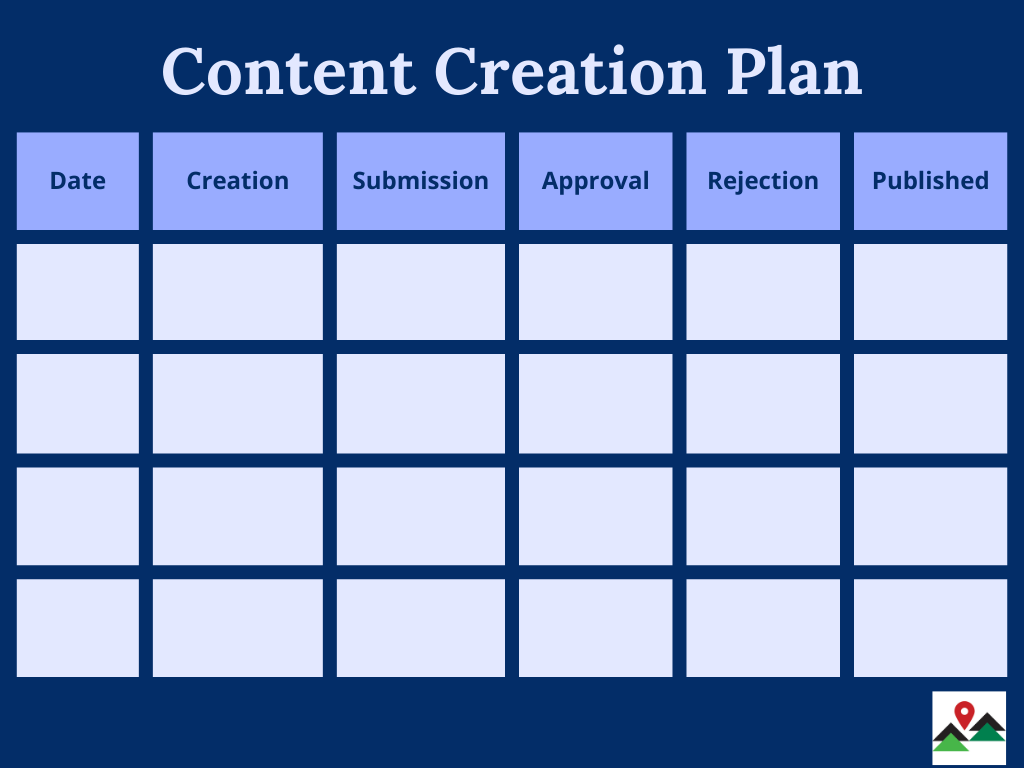
Step 6: Optimize Your Content for Search Engines
Optimize your content for search engines so your audience can discover. This involves doing keyword research to understand what your audience is searching for and using those keywords in your content. Using descriptive titles and meta descriptions for your blog posts is also great.
Step 7: Create Engaging and Shareable Content
Focus on creating high-quality visuals and multimedia. It should be engaging and shareable. This could include using professional images and videos in your content and adding interactive elements like quizzes or polls.
Creating a content plan is an ongoing process. Refine and update your plan based on your audience’s feedback and engagement.

7 Tips for Creating Engaging and Effective Content
You’re in the right place if you want to create content that captivates your audience and drives engagement.
Crafting compelling content is both an art and a science, but don’t worry – with a few tips and tricks– anyone can create engaging and persuasive content.
Follow these best practices for creating engaging and compelling content
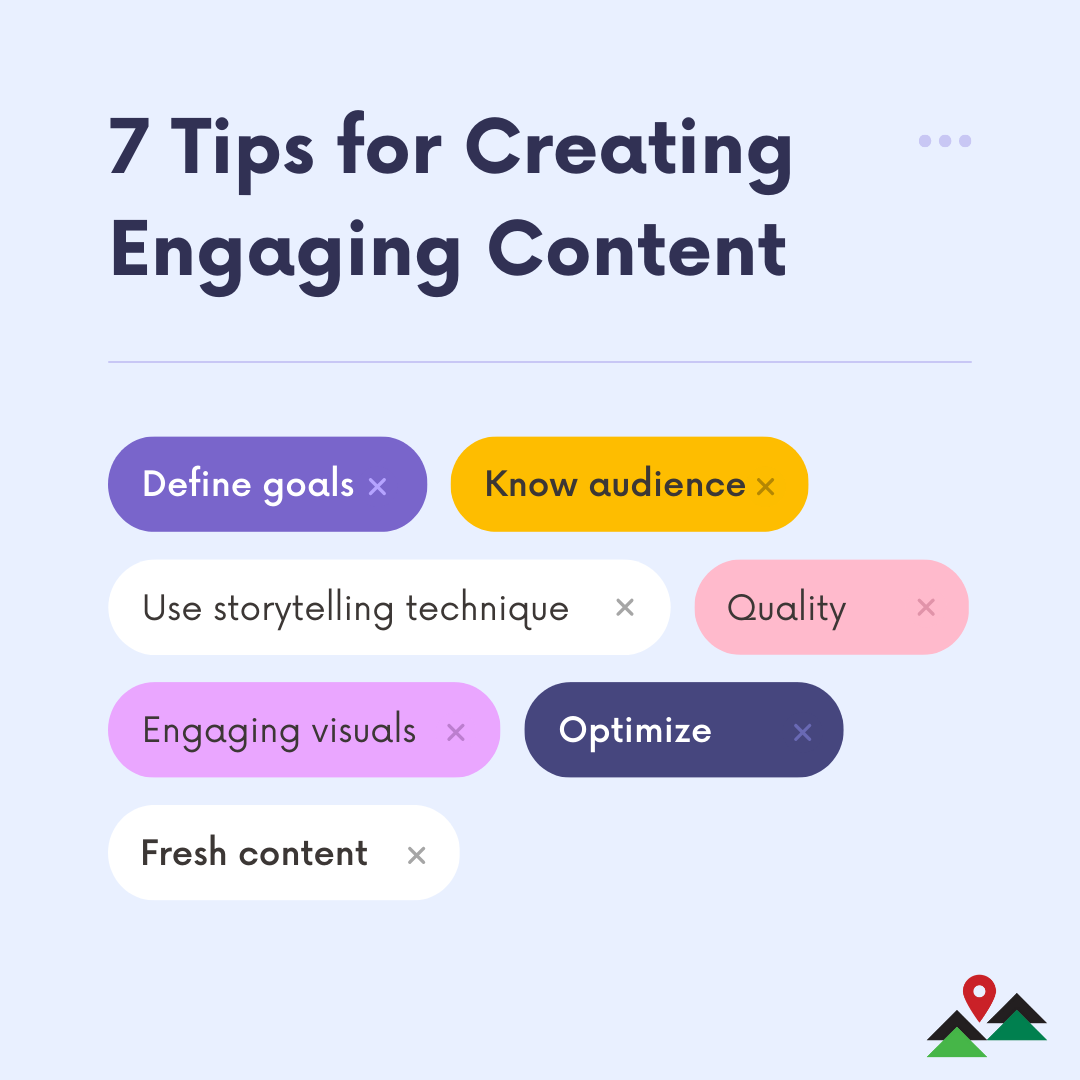
1. Define Your Goals and Objectives
Before creating content, you must define your goals and objectives. What do you want your content to achieve? Are you looking to increase brand awareness, drive website traffic, or generate leads? Once you clearly understand your goals, you can create content that aligns with those objectives.
2. Know Your Audience
Knowing your audience is essential to creating rich content. Research your target audience’s demographics, interests, pain points, and needs. Use this information to create content that speaks to them and provides value.
3. Use Storytelling Techniques
People connect with stories. Use storytelling techniques to create content that engages your audience on an emotional level. This could include using personal anecdotes or case studies that illustrate your point.
4. Focus on Quality Over Quantity
Creating high-quality content is more important than making a lot of content. Focus on creating content that is well-researched, informative, and engaging. This will help build your brand’s reputation as a thought leader and increase engagement with your audience.
5. Use Visuals and Multimedia
Visuals and multimedia can make your content more engaging and memorable. Use images, videos, infographics, and other multimedia elements to break up text and keep your audience engaged.
6. Optimize for Search Engines
Optimizing your content for search engines can drive traffic to your website and increase your visibility online. Use keyword research to identify relevant keywords and incorporate them into your content. Use descriptive headlines and meta descriptions to make it easy for search engines to understand what your content is about.
7. Keep Your Content Fresh and Updated
Create new content regularly to remain engaged with your audience. But you must also update and refresh existing content to ensure it remains relevant and up-to-date. Periodically reviewing and updating your content can help improve its performance and keep your audience engaged.
7 Content Promotion Strategies You Need to Try
Here are some content promotion strategies to help you reach a wider audience and get more engagement. IMO creating great content is just the first step in your content marketing strategy. You also need to promote your content effectively to see the results you’re looking for.
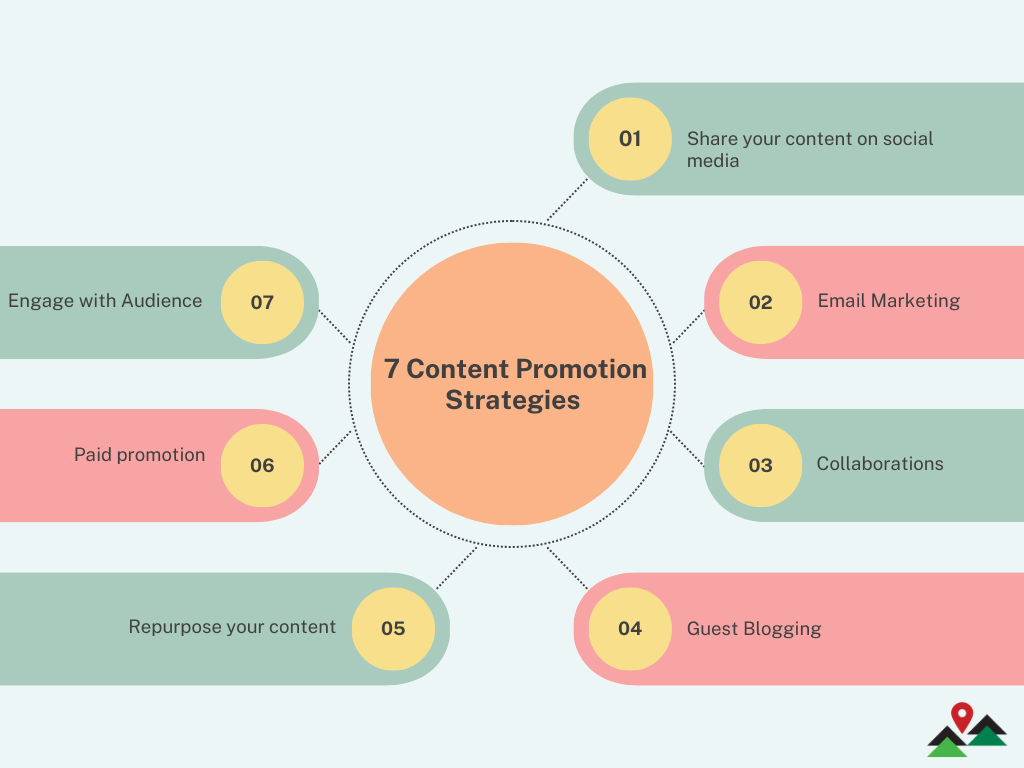
1. Share Your Content on Social Media
Social media is an excellent platform for promoting your content. Share your content on your social media channels, and use relevant hashtags and tags to increase your reach. Consider running paid social media campaigns to target your audience and increase engagement.
2. Leverage Email Marketing
Email marketing is another effective way to promote your content. Send newsletters and emails to your subscribers that highlight your latest content. Ensure your emails are well-designed and engaging and use A/B testing to optimize your subject lines and message.
3. Collaborate with Other Brands and Influencers
Collaborating with other brands and influencers in your niche can help you reach a wider audience. Reach out to brands and influencers who share your target audience and collaborate on content or promotions. This can help you build relationships and increase your visibility.
4. Guest Blogging
Guest blogging on other sites can help you reach new audiences and drive traffic back to your site. Look for areas relevant to your niche and have a strong following. Reach out to the site’s owner or editor with a pitch with a link to your site.
5. Repurpose Your Content
Repurposing your content can help you reach new audiences on different platforms. For example, turn a blog post into a video or infographic, or create a podcast episode based on your post. This can help you reach new audiences and increase engagement.
6. Use Paid Promotion
Paid promotion can help you reach a wider audience and drive traffic to your site. Run paid ads on social media, search engines, or other relevant platforms. Use A/B testing to optimize your ad messaging and targeting.
7. Engage with Your Audience
Engaging with your audience can help you build relationships and increase engagement. Respond to comments and messages on your social media channels, and participate in relevant online communities. Work on building trust and loyalty with your audience.
Creating a successful content strategy requires planning, creativity, and a deep understanding of your target audience.
Define your goals, research your audience, and craft high-quality content that resonates with your audience. You can build a powerful online presence that drives results for your business. Remember to stay flexible, adapt your strategy as needed, and never be afraid to experiment and try new things.
With these tips and best practices in mind, you’ll be well on your way to creating a successful content strategy that helps you achieve your digital marketing goals. So go ahead and put what you’ve learned into practice, and watch your content soar!
Even if you decide to tackle this on your own, we’re always here to lend a helping hand, share some advice, or point you in the right direction. So, don’t hesitate to reach out!
